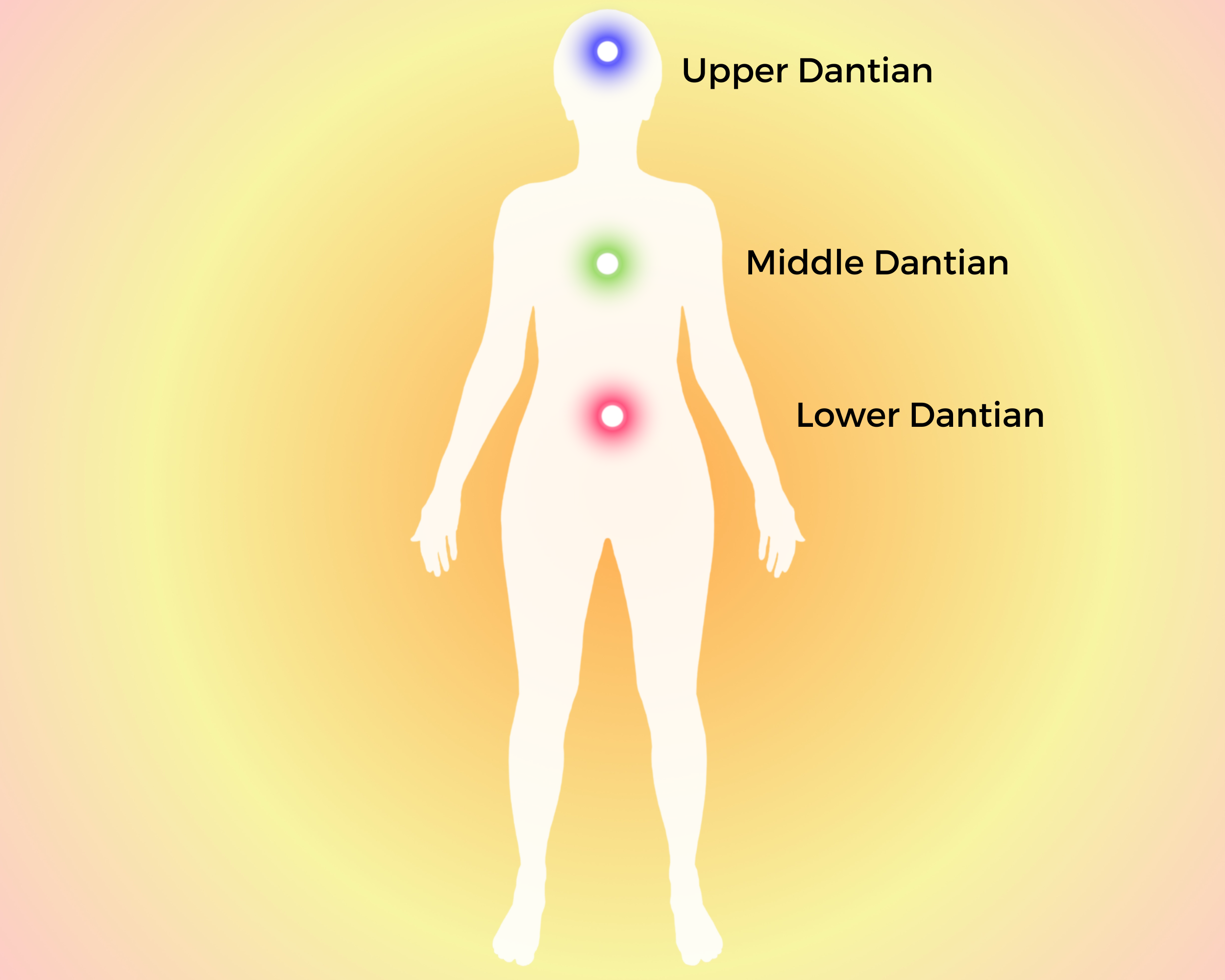This article is Part 2 in a 3 part series.
What are Energy Centers and Why are they Important in Qigong?
Last month, we took a look at energy gates. Now let’s venture into energy centers and their importance in qigong. As explained in Part 1, energy gates, energy centers and a variety of acupoints are essential to the flow of energy within our bodies.
Energy gates and centers are distinct. Gates exchange internal and external qi, while energy centers have the exceptionally important function of storing and distributing qi. Like the energy gates, these centers also support each other while simultaneously connecting with the whole body and the cosmos.
Because energy centers store and release the elixir of the universe they are like an ocean of qi inside of you containing your own inner medicine. They are often referred to as the “field of elixir” or “alchemical elixir field”. Qi cultivated and stored in the energy centers can be conserved and/or dispersed to maintain and improve health.
Location of the Three Main Energy Centers of the Body
In qigong we recognize three main energy centers of the body. They do not have physical manifestations. They are called dantians:
Lower dantian resides behind the navel, just in front of the spine, deep inside the abdomen. It is the most dominant and important of the three dantians primarily as it is in the middle of our vital organs, digestive system and reproductive organs.
Above all, lower dantian stores and disperses qi for all of our physical activities as well as for recovery from stress, illness and injury. Lower dantian is the main storehouse of our vitality by connecting with the immune system and is often considered our second brain. Abundant qi in this center supports the other energy centers.
Middle dantian is located behind the center of the breastbone, in front of the spine. It stores qi for our vital organs and to support, harmonize and balance emotions.
Qi condenses in middle dantian because of the close connection to the heart and lungs. While focusing on middle dantian compassion springs forth when you let your heart relax and open.
Upper dantian makes its home in the center of our brain, in the same location as the pineal gland. This center holds qi for all mental and consciousness activities.
Most of us have plenty of qi in upper dantian as we are often prone to over thinking and planning. Luckily, this energy center also provides a home for our intuition, spirit and a connection to the cosmos. Plus, it helps to regulate the body’s circadian rhythm.
Awakening Your Energy Centers
We practice qigong to awaken, cultivate, conserve and balance qi in our energy centers and thus our whole being. Qigong exercises naturally activate and create a vibration between the three main dantians of the body.
Through a variety of breathing exercises, meditation and mindful movements we fill and balance our dantians with qi. All three dantians can easily connect and communicate to share qi filled with wellness information.
Try this simple exercise at home to create, activate and conserve qi in lower dantian:
- Sit comfortably with your eyes closed and relax from head to toe. Place the center of both palms so they are aligned over navel (right hand rests against navel for women, left hand for men).
- Begin breathing in the belly, with each inhalation belly (lower dantian) gently expands, and with each exhalation belly gently contracts. As belly expands, let your mind expand out, as belly contracts focus on absorbing qi into lower dantian.
This practice can be done for a few minutes or much longer at any time of day. It is a great practice to do before going to bed or upon awakening.
This simple practice condenses and stores qi in lower dantian. Regular practice will awaken all dantians. This will help enhance your wellness, balance emotions and enliven your spirit.
Energy centers store and release the elixir of the universe. They create an ocean of qi inside of you to contain your own inner medicine.
Stay tuned for Part 3 where which will look at several of the acupoints that are frequently activated during qigong practice.








2 Comments